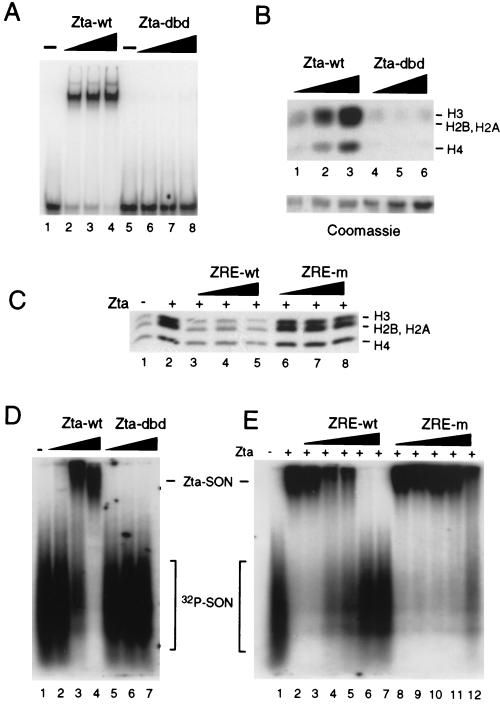FIG. 5.
DNA binding activity of Zta is required for stimulation of HAT activity. (A) Increasing concentrations (33, 100, and 300 ng) of wild-type Zta (lanes 1 to 4) and Zta-dbd (lanes 5 to 8) were compared for their ability to bind radiolabeled ZRE in EMSA. (B) Zta-wt (lanes 1 to 3) and Zta-dbd (lanes 4 to 6) were compared at 33, 100, and 300 ng for stimulation of nucleosomal HAT activity in HeLa nuclear extracts with [3H]acetyl CoA. Zta and Zta-dbd visualized by Coomassie brilliant blue staining of SDS-polyacrylamide gels (lower panel). (C) HeLa nuclear extracts with [3H]acetyl-CoA were incubated with Zta (lanes 2 to 8) and increasing concentrations of ZRE-wt oligonucleotide (lanes 3 to 5) or ZRE-m oligonucleotide (lanes 6 to 8). Acetylated histones were visualized by SDS-PAGE and fluorography. (D) 32P-labeled SONs (20 ng) were incubated with Zta (10, 30, or 90 ng) or Zta-dbd (10, 30, or 90 ng) and assayed by EMSA. (E) Zta (30 ng) and 32P-labeled SONs (20 ng) were incubated with ZRE or ZRE-m oligonucleotide (fivefold dilutions up to 1.0 μg) and assayed by EMSA.

